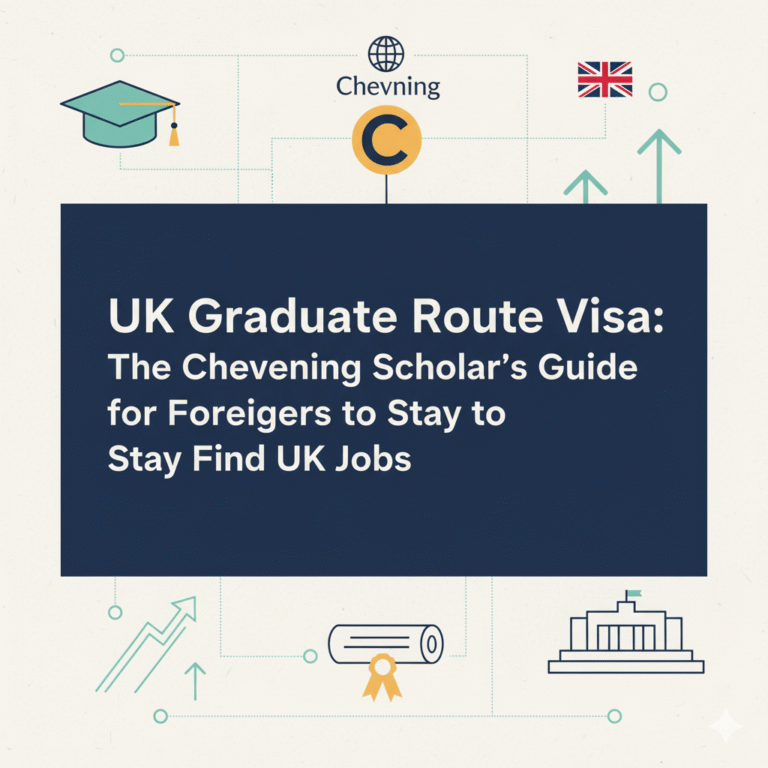The allure of a world-class education in the United States is undeniable. However, the accompanying tuition fees and living costs can seem like an insurmountable barrier for many aspiring students, both domestic and international. The good news? A vast landscape of USA scholarships exists, designed to bridge this financial gap. But simply knowing they exist isn’t enough. The key lies in understanding how to apply for USA scholarships effectively and, crucially, how to get approved.
This comprehensive guide will walk you through the strategic steps, essential tips, and common pitfalls to avoid, significantly boosting your chances of securing that coveted scholarship money.
Understanding the US Scholarship Landscape: More Than Just Good Grades
Before diving into the “how-to,” it’s vital to understand that “scholarship” is a broad term. In the US, scholarships are primarily awarded based on:
- Merit: This is where your academic achievements (GPA, test scores like SAT/ACT if required), talents (arts, music, athletics), leadership skills, and community involvement shine.
- Need: Based on your family’s financial situation. The FAFSA (Free Application for Federal Student Aid) is paramount for US citizens and eligible non-citizens for need-based aid from the government and many institutions. International students often use the CSS Profile or university-specific financial aid forms.
- Specific Criteria: Many scholarships target students based on demographics (ethnicity, gender), field of study (STEM, humanities), heritage, or unique circumstances (e.g., first-generation college students).
Getting “approved” means convincing the scholarship committee that you are the best fit for their specific criteria and that investing in your education is a worthwhile endeavor.
Phase 1: Laying the Groundwork – Preparation is Key
Success in the scholarship application game begins long before you fill out the first form.
1. Start Early (The Sooner, The Better):
- High School Students: Begin your search in your sophomore or junior year. Focus on building a strong academic profile, engaging in meaningful extracurriculars, and taking on leadership roles.
- College Students/International Applicants: If you’re already in college or applying from abroad, start your research at least 12-18 months before you intend to begin your studies in the US.
2. Identify Your Strengths & Define Your Goals:
- What are you passionate about? What are your academic strengths? What unique experiences or talents do you possess?
- What are your career aspirations? How will a US education, supported by this scholarship, help you achieve them?
Understanding yourself helps you target the right scholarships and craft compelling narratives.
3. Comprehensive Scholarship Research – Where to Look:
- Online Scholarship Databases: These are invaluable. Popular options include:
- Fastweb
- Scholarships.com
- College Board’s Scholarship Search
- Niche
- Cappex
- InternationalStudent.com (for international students)
- University Financial Aid Websites: Every US university has a financial aid page. This is often the BEST source for college-specific scholarships, which can be substantial. Look for sections on “scholarships for incoming freshmen,” “merit aid,” or “international student aid.”
- High School Counselors / University Advisors: They often have lists of local and national scholarships.
- Government Resources:
- USA.gov (for domestic students): Links to federal aid programs.
- EducationUSA (for international students): U.S. Department of State network with advising centers worldwide.
- Professional & Community Organizations: Many Rotary Clubs, Kiwanis, ethnic associations, religious groups, and professional bodies (e.g., Society of Women Engineers) offer scholarships.
- Employer-Sponsored Scholarships: Check if your parents’ employers or your own offer educational assistance.
4. Create a Master List & Calendar:
- Use a spreadsheet to track scholarships you’re interested in. Include:
- Scholarship Name
- Eligibility Criteria (GPA, major, residency, etc.)
- Award Amount
- DEADLINE (Critical!)
- Required Documents (essay, transcripts, LoRs, etc.)
- Website Link
- This organization is crucial to avoid missing deadlines.
5. Scrutinize Eligibility Requirements:
- Don’t waste time applying for scholarships you don’t qualify for. Read the fine print carefully. Are you a US citizen, permanent resident, or an international student? Does it require enrollment in a specific program? Is there a minimum GPA?
Phase 2: Crafting a Winning Application – Making Your Case
This is where you actively work to get approved. Each component of your application needs to be polished and persuasive.
1. The Scholarship Essay: Your Voice, Your Story
This is often the MOST IMPORTANT part of your application.
- Understand the Prompt: Address the question directly. Don’t go off on a tangent.
- Be Authentic & Personal: Share genuine experiences, challenges overcome, and aspirations. Generic essays don’t stand out.
- Show, Don’t Just Tell: Instead of saying “I am a leader,” describe a specific instance where you demonstrated leadership and its impact.
- Structure & Clarity: Have a clear introduction, body paragraphs that support your thesis, and a strong conclusion.
- Tailor Each Essay: While some core themes might overlap, never use a generic essay. Customize it for each specific scholarship, highlighting how your goals align with the scholarship provider’s mission.
- Proofread Meticulously: Typos and grammatical errors scream carelessness. Read it aloud, use grammar checkers (like Grammarly), and ask trusted teachers, friends, or family members to review it.
2. Letters of Recommendation (LoRs): Powerful Endorsements
- Choose Wisely: Ask teachers, professors, counselors, employers, or community leaders who know you well and can speak positively and specifically about your abilities, character, and potential.
- Ask Early: Give your recommenders at least 3-4 weeks (preferably more) before the deadline.
- Provide Information: Give them:
- Your resume or list of activities.
- A draft of your scholarship essay (if relevant).
- Information about the scholarship (its purpose, criteria).
- The specific deadline and submission instructions.
- A polite reminder a week before the deadline.
- Waive Your Right to See Them: This often lends more credibility to the letter.
3. Academic Transcripts & Test Scores:
- Request official transcripts from your school(s) well in advance.
- If SAT/ACT scores are required (many US universities are now test-optional, but some scholarships might still consider them), ensure they are sent officially.
- Highlight academic honors, AP/IB courses, and a strong GPA.
4. Resume / List of Activities:
- Detail your extracurricular activities, volunteer work, part-time jobs, internships, leadership positions, awards, and honors.
- Quantify achievements whenever possible (e.g., “Raised $500 for [cause]” instead of “Fundraised”).
- Focus on impact and commitment rather than just listing activities.
5. Financial Documentation (For Need-Based Aid):
- FAFSA (Domestic Students): Complete this as soon as it opens (typically October 1st). Many state and institutional aid programs rely on FAFSA data.
- CSS Profile (Many Private Universities & International Students): This form, administered by the College Board, delves deeper into family finances. It has a fee. Some universities offer waivers.
- University-Specific Financial Aid Forms: Be prepared to fill these out, especially for international students.
- Accuracy is paramount. Gather tax returns and other financial documents early.
6. The Interview (If Applicable):
Some highly competitive scholarships require an interview.
- Prepare: Research the scholarship provider. Re-read your application. Prepare answers to common questions (e.g., “Tell me about yourself,” “Why do you deserve this scholarship?” “What are your goals?”).
- Practice: Do mock interviews with a teacher, counselor, or friend.
- Be Professional: Dress appropriately (even for virtual interviews), be punctual, maintain eye contact, and speak clearly and confidently.
- Ask Thoughtful Questions: This shows your genuine interest.
- Send a Thank-You Note: A brief email within 24 hours is a professional courtesy.
Phase 3: Submission and Beyond – Increasing Approval Odds
1. Submit ON TIME (Preferably Early):
- Don’t wait until the last minute. Technical glitches happen. Submitting a few days early reduces stress and shows responsibility.
- Double-check that all required components are included and correctly uploaded/mailed.
2. Keep Copies of Everything:
- Save digital copies of your essays, forms, and any correspondence.
3. Apply to Multiple Scholarships:
- Don’t put all your eggs in one basket. The more well-crafted applications you submit (for which you are eligible), the higher your chances of winning one or more. It’s a numbers game, but quality trumps sheer quantity if applications are poor.
4. Follow Up (Politely and Sparingly):
- For most large national scholarships, you’ll be notified automatically.
- For smaller, local scholarships, if you haven’t heard back by their stated notification date, a polite inquiry might be appropriate.
Common Mistakes That Sabotage Scholarship Approval
- Missing Deadlines: The #1 easily avoidable mistake.
- Not Meeting Eligibility Criteria: Wasted effort.
- Generic, Rushed Essays: Shows lack of effort and interest.
- Typos and Grammatical Errors: Unprofessional.
- Incomplete Applications: Missing documents will disqualify you.
- Dishonesty or Exaggeration: Scholarship committees can often spot this.
- Asking for LoRs Last Minute: Puts undue pressure on recommenders and may result in a weaker letter.
- Not Tailoring the Application: Using a one-size-fits-all approach.
Special Considerations for International Students Seeking US Scholarships
- Competition is Fierce: Scholarships for international students, especially full-ride ones, are highly competitive.
- University-Specific Aid is Key: Many US universities offer generous financial aid and scholarships specifically for international students. Focus your research here.
- Fulbright and Other Government/Private Programs: Explore programs sponsored by your home country’s government or international organizations (e.g., Fulbright Foreign Student Program, Aga Khan Foundation, etc.).
- Proof of English Proficiency: TOEFL or IELTS scores are usually required.
- Visa Requirements: Understand the student visa (F-1) process.
The Mindset for Scholarship Success
Applying for scholarships is a marathon, not a sprint. It requires dedication, organization, resilience, and a belief in your own potential.
- Be Persistent: Don’t get discouraged by rejections. Many successful scholarship recipients applied for dozens.
- Be Authentic: Let your true personality and passion shine through.
- Be Grateful: If you win, acknowledge the provider and fulfill any obligations (e.g., maintaining a certain GPA).
By meticulously preparing, crafting compelling and tailored applications, and avoiding common pitfalls, you can significantly increase your chances of getting approved for USA scholarships. The financial freedom and prestige that come with these awards can transform your educational journey and set you on a path to achieving your American dream. Start today, stay organized, and put your best foot forward!







